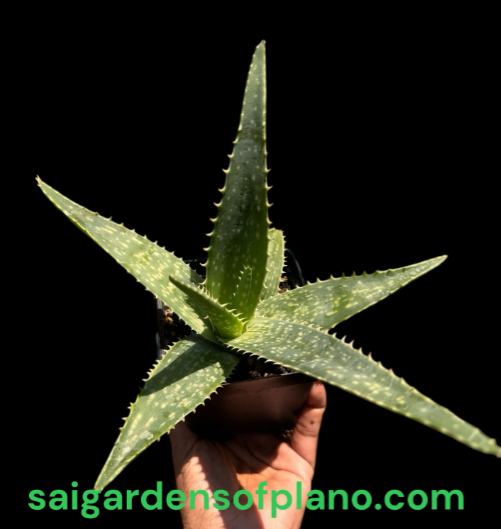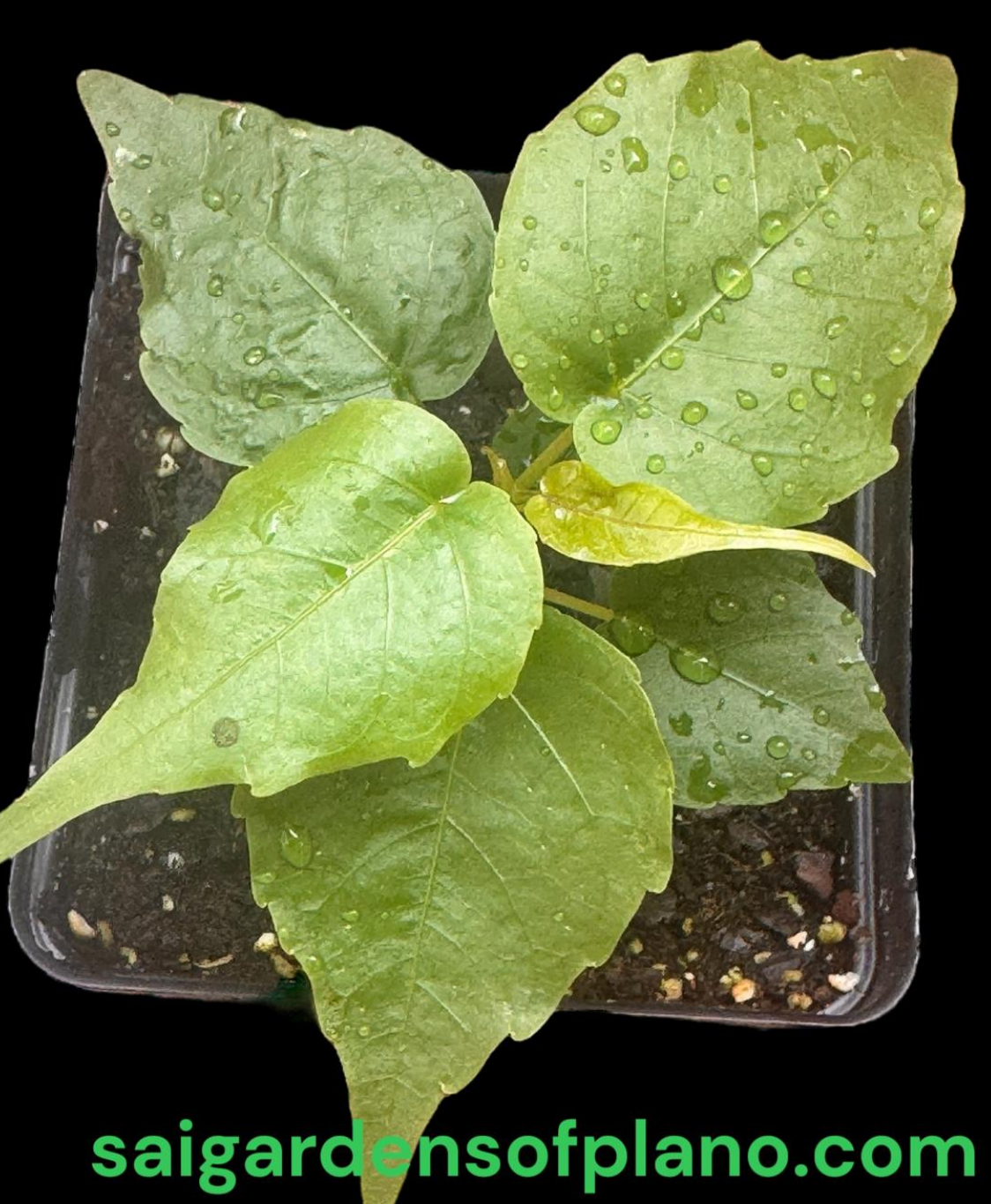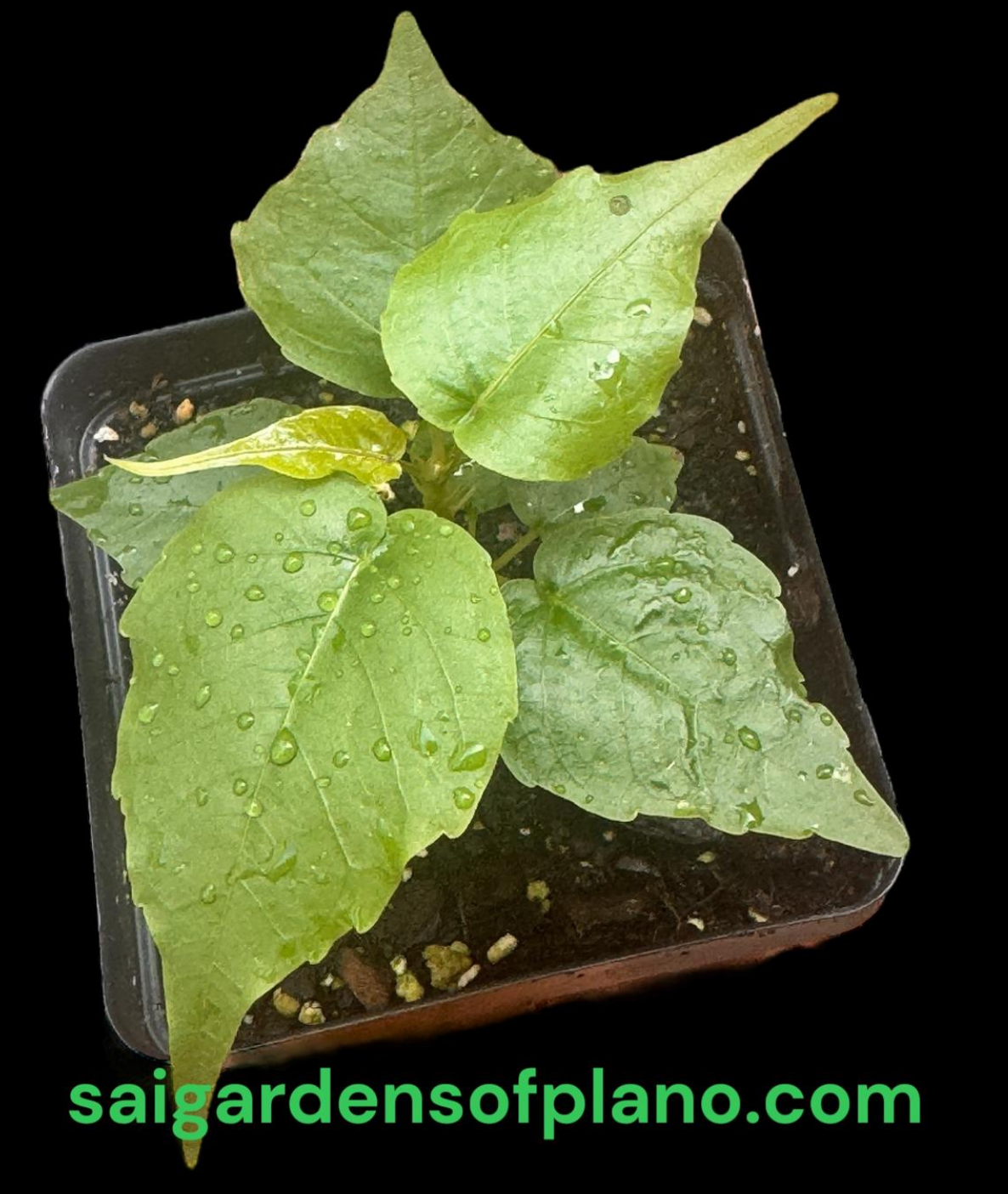 Image 1 of 2
Image 1 of 2

 Image 2 of 2
Image 2 of 2



Red Ponnanganti
4 inch container
"Ponnanganti" refers to a plant known as Ponnaganti Koora leaves, botanically classified as Alternanthera sessilis. It's a perennial herb and a member of the Amaranthaceae family. It's also known by several other names like Matsyaakshi, Ponnonkanni keerai, and in English, Water Amaranth, Sessile Joyweed, and Dwarf Copperleaf. In India, it's often called a "miracle plant," with many names including "pon," which means "gold."
Ponnanganti Koora thrives in moist, hot climates and is found in tropical and subtropical regions, often near rice and sugarcane fields. It's used as a vegetable, a beauty aid, and in medicinal treatments to improve digestion. The leaves are rich in beta-carotene, iron, fiber, calcium, and vitamins C and A. They can be eaten raw (when young and tender) or cooked in dishes like soups, curries, and stir-fries.
Historically, Ponnaganti Koora leaves are native to India and Sri Lanka and have spread across Asia. They are traditionally used in Ayurvedic medicine to cleanse and improve overall dietary health. Ancient texts and Indian healing practices suggest that consuming the leaves for 48 days can provide vital minerals and nutrients for eye health and skin glow. The oil from Ponnanganti, called thailam, is also noted for its properties.
4 inch container
"Ponnanganti" refers to a plant known as Ponnaganti Koora leaves, botanically classified as Alternanthera sessilis. It's a perennial herb and a member of the Amaranthaceae family. It's also known by several other names like Matsyaakshi, Ponnonkanni keerai, and in English, Water Amaranth, Sessile Joyweed, and Dwarf Copperleaf. In India, it's often called a "miracle plant," with many names including "pon," which means "gold."
Ponnanganti Koora thrives in moist, hot climates and is found in tropical and subtropical regions, often near rice and sugarcane fields. It's used as a vegetable, a beauty aid, and in medicinal treatments to improve digestion. The leaves are rich in beta-carotene, iron, fiber, calcium, and vitamins C and A. They can be eaten raw (when young and tender) or cooked in dishes like soups, curries, and stir-fries.
Historically, Ponnaganti Koora leaves are native to India and Sri Lanka and have spread across Asia. They are traditionally used in Ayurvedic medicine to cleanse and improve overall dietary health. Ancient texts and Indian healing practices suggest that consuming the leaves for 48 days can provide vital minerals and nutrients for eye health and skin glow. The oil from Ponnanganti, called thailam, is also noted for its properties.














